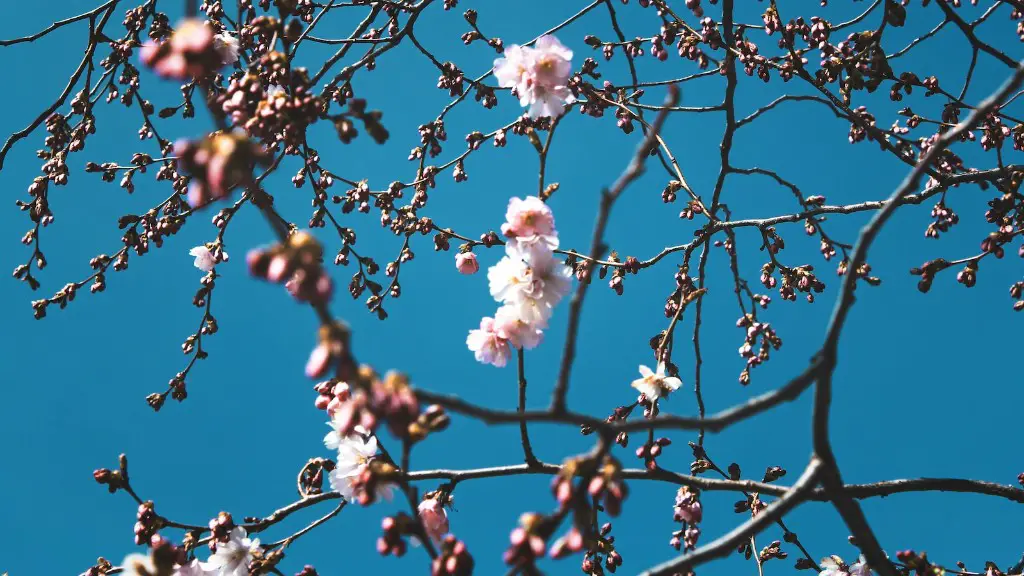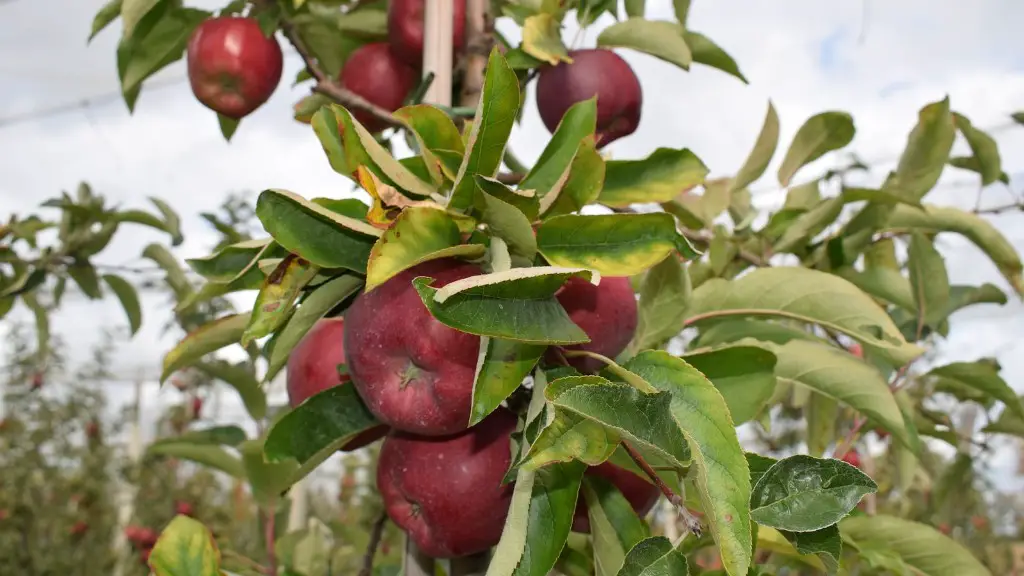Material Prep
Before beginning any painting project, it is important to know what materials you’ll need. For painting a palm tree on canvas, you’ll need an acrylic paint set, brushes (a small round brush and one with a flat edge both work well), a palette to mix your paint, masking tape and a few canvases of your choice. You may also find it helpful to have some reference photos of palm trees that you can have on hand while you are working.
Painting the Canvas
Once you’ve gathered your materials, you are ready to begin your painting process. Start by taping off a shape to represent the outline of the palm tree. This shape can be as simple as a triangle or more intricate, depending on the level of detail that you wish to achieve. You may choose to use a pencil first to draw the shape on the canvas, if desired.
Next, begin to fill in the canvas with a solid background color, such as a light yellow or green. You may need several coats to achieve the desired level of opacity. When working with acrylics, it’s important to make sure that each coat has had enough time to dry before adding additional layers. If you are adding texture to the canvas, such as with a sponge or paint palette knife, now is the time to do it.
Creating the Palm Tree
Once the background is dry, you are ready to begin creating the palm tree itself. Start by sketching the details of the tree with a pencil, if desired, and then use your round brush to carefully fill in the shape. Acrylic paint is ideal for this, as it dries much faster than an oil-based paint. When painting the leaves, don’t be afraid to experiment with different shades of green and yellow to give the tree a more realistic look.
Once you are finished with the palm tree, you may want to go back and add some additional details, such as shadows or highlights. You may also decide to add some other elements to your image, such as a beach or sea. The possibilities are truly endless!
Finishing Touches
Once you have created the painting to your satisfaction, it’s time for the finishing touches. You may choose to add texture to the canvas by using a sponge or palette knife. You can also add some additional details, such as a wave or birds flying overhead. Finally, if you wish, you may choose to frame your painting to protect it and make it easier to hang.
Painting a palm tree on canvas is a great way to express yourself and create a beautiful piece of artwork. With the right materials and the right instructions, anyone can create a gorgeous piece of art!
Advanced Colour Theory
For more advanced painters, incorporating colour theory into your painting will allow you to create a more dynamic and appealing piece. Colour theory involves the study of hues and how they interact with each other. To create a more lifelike palm tree, take note of how the sun affects the leaves. Consider using warm tones such as yellows and oranges to represent where the sun is falling, and use cool tones such as greens and blues to represent areas of the tree that are not in direct sunlight.
You can also use complimentary colours, such as green and pink, to create a more vibrant contrast. With this technique, you may want to paint your tree using a single colour first, and then come back and add some complimentary highlights or shadows with a second, complimentary colour. This will create a much more eye-catching effect.
Texture and Shading
Once you have considered your colour options, you can begin to think about adding extra texture and depth to your painting. Rather than painting the entire tree in one solid colour, try breaking it up with lighter and darker values. This will add contrast and depth to your painting. Consider using a light, wispy brushstroke to fill in the darker areas, and short, heavy brushstrokes to fill in the brighter areas. This will create an interesting texture that gives the painting an extra level of realism.
Finally, you may want to add some shading to the leaves to further enhance the effect. Using two or three different shades of green and gently blending the paints together is a great way to achieve a realistic and lifelike effect.
Linework and Detail
To create an even more eye-catching painting, consider adding linework to the canvas. This is the process of drawing a thin, precise line to outline the trunk of the tree and the foliage. You can also use this technique to add details and intricate elements to the painting. When working with linework, it is important to use a steady hand and a light touch, as heavy or uneven lines will not result in a very appealing painting.
Adding a few final touches, such as highlights and shadows, will complete the look. You may choose to use a flat brush or a sponge to create these additional elements.
Safe Painting Techniques
Painting with acrylics is relatively safe, as long as you follow some simple safety precautions. Make sure you are wearing protective clothing, such as an apron or old clothes, and don’t allow any of the paint to come in contact with your skin. Additionally, make sure you have adequate ventilation, as the fumes from the paint can be hazardous.
Finally, be sure to clean your workspace and materials when you are finished painting. Acrylic paint is water soluble, so it is easy to clean up. Thoroughly wash your brushes and any other materials that may have come in contact with paint.
Finding Inspiration
When painting a palm tree, it is important to find inspiration in the world around you. Taking a few moments to observe real palm trees in nature will give you a better understanding of how they look and what makes them unique. Additionally, if you need guidance, looking at photos or artwork of other palm tree paintings can provide valuable insight as to how you can create your own masterpiece.
No matter how you choose to create your painting, it is important to stay inspired and true to your vision. Taking the time to explore different elements and techniques is the best way to create a unique painting that will stand out from the crowd.
Practising and Experimenting
The best way to improve as a painter is to keep practising and experimenting to find what types of techniques and elements work best for you. Creating sketches or small studies beforehand can help you become more familiar with a particular subject before taking on a larger project. Additionally, trying out different brush strokes and incorporating different materials into your work will ensure that you are never stuck in a creative rut.
Painting the same subject multiple times can also provide valuable insight. Paying attention to the differences in each piece will give you an idea of what works and what doesn’t. This can help you develop your style and make sure that your paintings always have a unique and personal touch.
Using Photographs as Reference
Using reference photos can be a huge help as you create your painting. By having a picture of your subject nearby, you can refer to the image as you work, ensuring that you remain accurate and true to your vision. Keep in mind that any photo you use should be used as reference only – do not directly copy it, as this could get you in trouble.
Using reference photos will not only make sure that your painting is as accurate as possible, but will also provide inspiration and ideas as you create your masterpiece. Even if you take a few liberties when recreating the photo in paint, having an image as guidance can be incredibly helpful.




